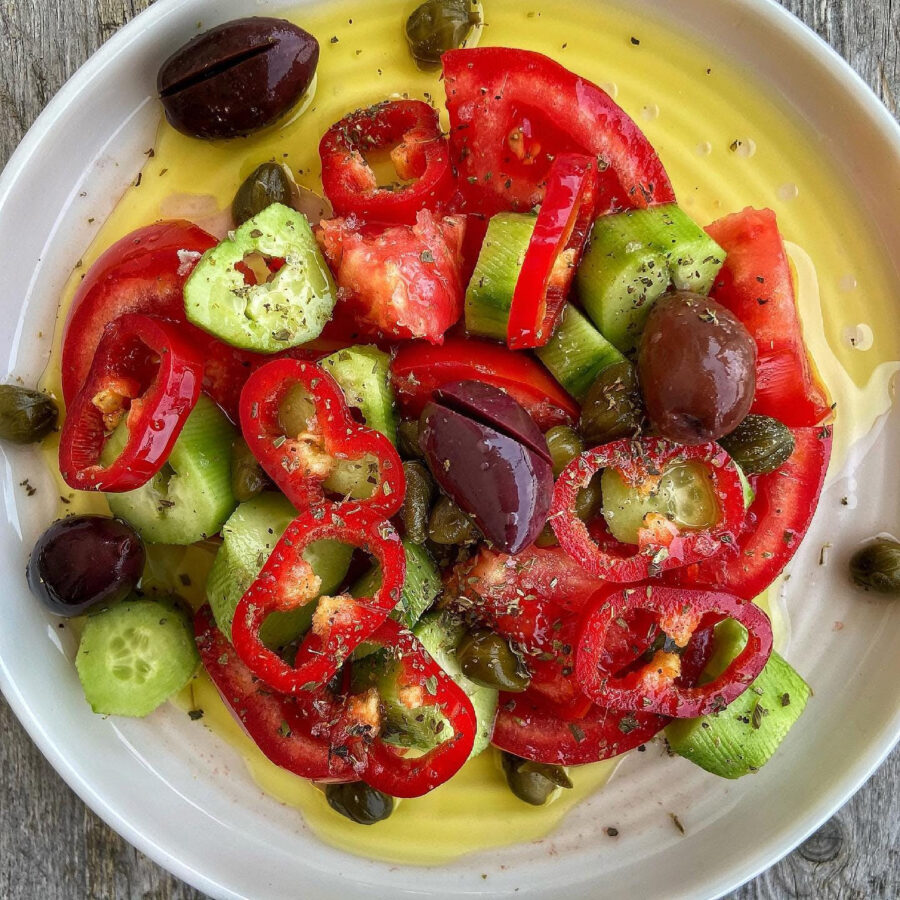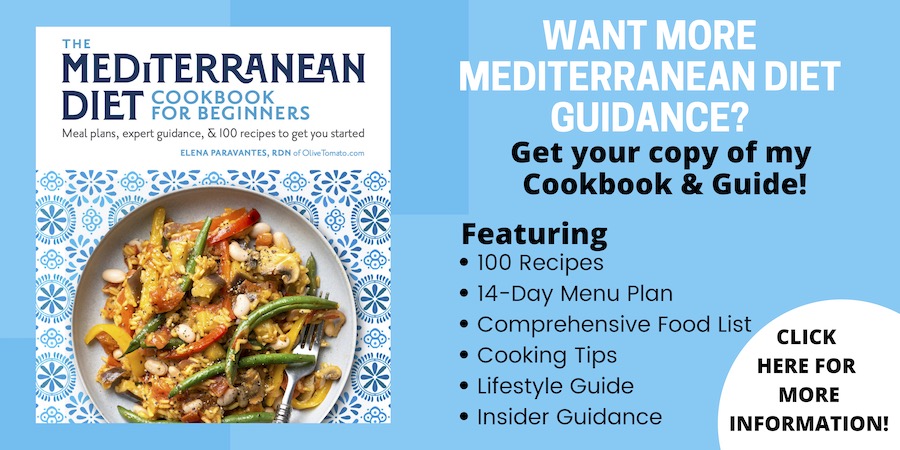Mediterranean Lifestyle Challenge 2023 – Day 2

Welcome to Day 2
Today we will focus on what we eat, but specifically on one aspect. First though let me point out that when you look at the research it is clear that the Mediterranean Diet is associated with numerous health benefits; it protects from heart disease, cancer, Alzheimer’s, diabetes, even depression. It is also associated with a long and good life. Those who follow a Mediterranean diet have a greater chance of not only living many years, but they are likely to live relatively free of fractures, hospitalization, nursing home placement, disability, and dementia.
Obviously, the diet as a whole is important but one component that stands out is the consumption of vegetables. And to be more specific, the number of vegetables consumed. To get the most out of this practice you must consume a large amount of vegetables, probably more than you think.
Vegetables protect from a variety of chronic diseases, this is due to the hundreds of compounds they contain (antioxidants, vitamins, minerals, fiber etc.). They have been shown to lower blood pressure, keep the heart strong, protect from diabetes, protect from depression, prevent some types of cancer, protect from dementia, keep the digestive system healthy, help maintain a healthy weight, aid in weight loss and more. A common finding in all of this is that the higher the intake of vegetables, the higher the protection.
So how many vegetables a day should I consume?
Data shows that within the authentic Greek diet, which was the prototype for the Mediterranean diet, vegetable consumption was about 1 pound per day (450 g). Please note, that is vegetable consumption alone, not fruit.
Remember the 5 a day? The 5 referred to the recommendation of eating 5 fruit and vegetables a day combined, which corresponded to about 400 g a day. However, that recommendation is now outdated, as research now points out that a higher intake of vegetables is needed to protect from chronic disease. It appears that 800 g (28 ounces) a day is an adequate amount, which corresponds to about 9-10 servings a day (vegetables and fruit)
Do you consume that many servings of vegetables a day?
We don’t need a questionnaire to figure that out, just jot down your food intake for 3-4 days and you can find out just how many servings of vegetables you are consuming.
1 serving is considered about 1 cup raw, ½ cup cooked vegetables or 1 fruit.
According to the CDC (Centers for Disease Control and Prevention), only 1 out of 10 Americans fulfill these fruit and vegetable requirements.
Challenge #2
Today’s challenge is about eating vegetables; you have to eat even more than you thought so.
So, what does that mean? It simply means that your meals will be made up of mostly of vegetables. Not starches and not meats. As you may know, most of the meals in an authentic Mediterranean diet are vegetables, there is very little meat. This is quite a leap from the typical western diet that requires some sort of meat or poultry with every meal as well as plenty of starch. I’ve noticed that many readers will often make one of my vegetables-based casseroles which is meant to be a main course, and then accompany it with some sort of meat. In terms of health benefits, this mentality of needing to supplement vegetables with meat or poultry or even a starch needs to change. If you are really looking to upgrade your diet, then you really need to cut out the meat and increase the vegetables. And trust me a vegetable heavy diet is delicious and filling. Let’s look at how a typical day can easily fulfill these vegetable and fruit requirements:
*Next to each meal you see the total amount of produce (vegetables or fruit) by weight
- Breakfast: Pan Con Tomate Recipe-Spanish Breakfast Toast or Mediterranean Feta Toast: 3-4 oz (100-120 g) vegetables
Lunch: Lathera dish such as Greek Green Beans-Fasolakia or Greek Style Peas-Arakas Latheros or Braised Cauliflower with Tomato – Kounoupidi Kapama(includes crushed tomato and/or onion) accompanied with 1 slice whole grain bread and cheese: 19 oz (550 g) vegetables.
- Dinner: Hearty green leafy salad (2 cups leafy greens + olive oil dressing and other ingredients such as nuts and cheese) such as Classic Arugula-Parmesan Salad or Lentil and Greens Salad with Feta and Pear: 5.5 oz (160 g) vegetables
- Snacks: 2 fruit: 10.5 oz (300 g) fruit
Total: 2.4 pounds (39 oz) of produce
- -Comments and Insights-
As you can see consuming a vegetable main course for your largest meal will provide most vegetable servings, so it is important that those vegetable casseroles be consumed as a main course rather than an accompaniment to a meat. - I’ve noted this many times that cooking your vegetables is the most efficient and easiest way to get large amounts of vegetables in your day.
Click here for a collection of recipes >> Vegetable Entrees
I have plenty of resources that will help you eat more vegetables and lower your meat intake:
- 5 Ways to Eat More Vegetables
- Five Steps to eat more like a Mediterranean this year: Cook your vegetables
- Mediterranean Diet: Eat Less Meat in 5 Steps
- Greens Good for the Brain -5 Greek Ways To Get Greens in Your Diet
- 5 Classic Greek Vegan Recipes
Want More Mediterranean Diet Guidance? Get my top-rated book!
Get it here >> The Mediterranean Diet Cookbook for Beginners

Did you miss the previous days?
Catch up below.

I would also like to know about pulses. And what about root vegetables, do they count? One of my favourites is spanakorizo – how does one calculate that?
I just turned 60. High cholesterol, stress eating and and inflammation/joint pain have rendered me exploring the Mediterranean diet. I’ve ordered your book for beginners and am hopeful! Thank you for giving us all these wonderful resources! Never too
late, right?
I get very hungry if I don’t eat some protein though. That’s why i often accompany the vegetable dishes with meat or more often fish or chicken, because I don’t want to be chronically hungry.
Question for you Elena, Do pulses count toward the vegetable goal? For example, my favorite recipe is your black eyed pea stew. If I have this for dinner or lunch, do the black eyed peas count as a veg, or should my goal of 9 be in to addition of that.? Thank you for all that you do!